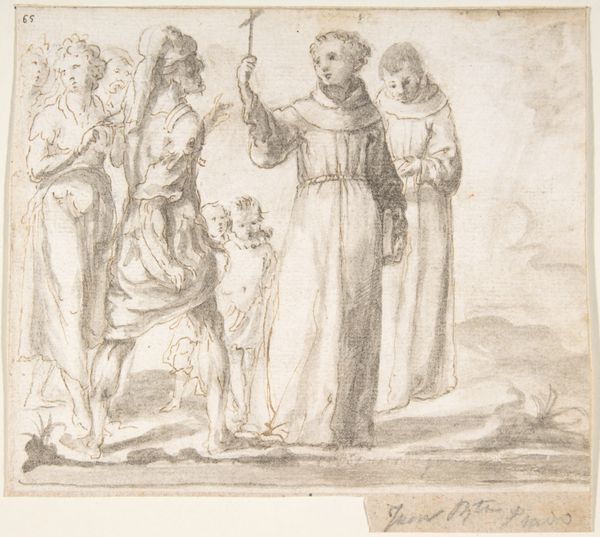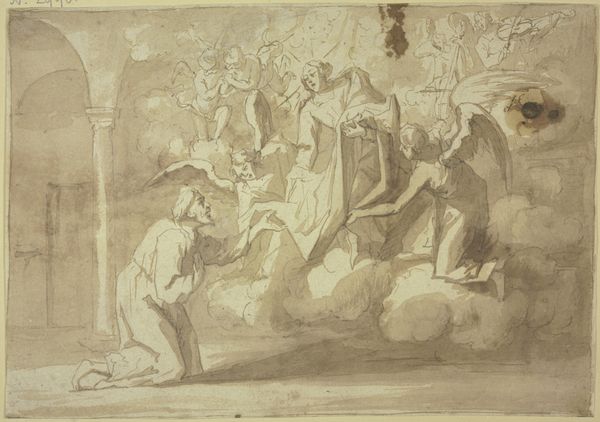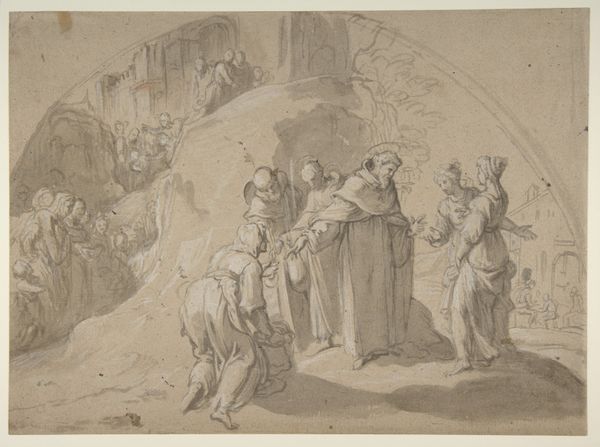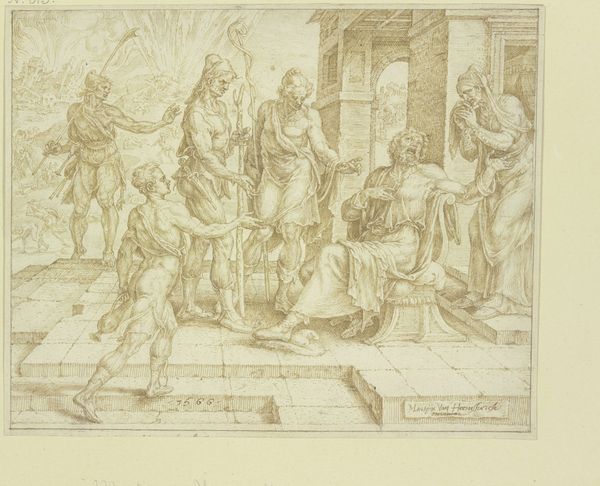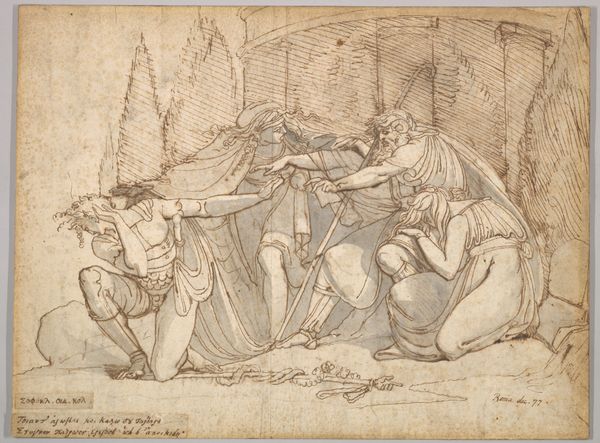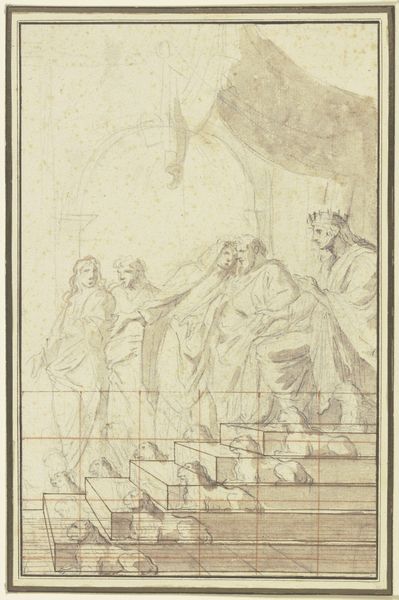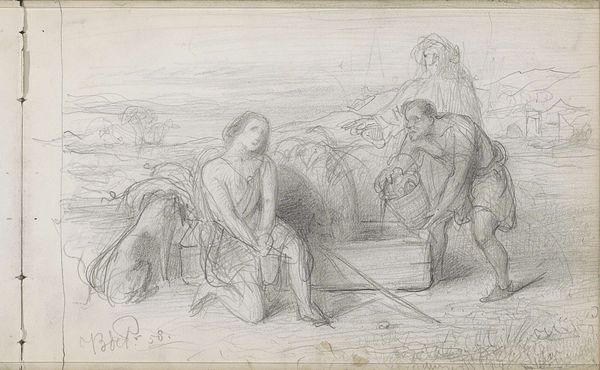
Copyright: Public Domain
Curator: Welcome. We're standing before Julius Schnorr von Carolsfeld's "Noli me tangere," created in 1821. It’s rendered in pencil and ink on paper, currently held at the Städel Museum. Editor: My first impression? Vulnerable. And strangely gentle. The spare lines and delicate shading give it an almost ethereal quality. It's like witnessing a private moment, full of hushed reverence. Curator: Precisely. The title, of course, is Latin for "touch me not," referring to the biblical scene where the resurrected Christ appears to Mary Magdalene. The formal elements—the contrast between the kneeling Mary and the upright Christ, the implied circle framing them—reinforce the narrative. Editor: That circle, like a divine spotlight, highlights the forbidden yet longed-for contact. It's fascinating how he captures the tension with such restraint. Those wispy lines around Christ, are they light or a symbolic barrier? Or both? Curator: A compelling ambiguity, wouldn’t you agree? Notice, too, how the linework defines the drapery, accentuating form and volume. Carolsfeld was clearly invested in classical ideals of beauty, infused here with Romantic sensibility. The nude is idealized. Editor: It feels almost unfinished, though. The sketch-like quality adds to the immediacy. Almost like a ghost caught in time. Maybe that’s the point. A resurrection—something beyond definition, just barely glimpsed. The unfinished strokes makes me feel it wasn’t fully graspable, but that is exactly the most interesting aspect to ponder on it. Curator: Yes, and let’s not overlook how Carolsfeld employs line as both contour and texture, a technical prowess that allows the image to oscillate between the corporeal and the spectral. The way light emanates with simple use of white. Editor: What’s particularly affecting is how Carolsfeld uses these minimalist tools to convey maximum emotion. The longing in Mary's upward gaze… you almost feel it yourself. So fragile. So human, yet divine. Curator: Indeed, "Noli me tangere" is a masterclass in emotional restraint, a potent blend of Romanticism's expressive power and the linear precision of classical form. The themes of vulnerability, longing, and an almost dreamlike sensibility leaves me yearning for resolution that perhaps is there to see within myself, rather than in the artwork. Editor: I love that the artwork leaves you to make peace between those sentiments, a mark of any artwork that resonates well. Thanks for the tour, time well-spent here!
Comments
No comments
Be the first to comment and join the conversation on the ultimate creative platform.

